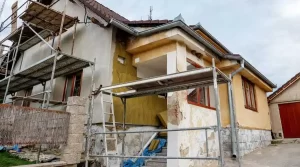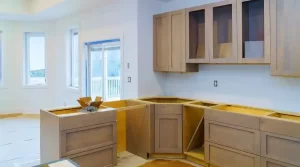Your custom home’s roof has a big impact on how attractive, secure, and long-lasting it is, not to mention how much it will cost you. Your homeowner’s organization can have rules governing the color, design, pitch, and even the materials you can use for your roof. If not, you can educate yourself on the different types of materials available and choose the best roofing material for your house.
You now have more options than ever thanks to advancements in roofing materials throughout the years.
Roof Design and Material Selection Criteria
There are several variables that could affect the type of roofing materials you should think about for your house.
- Your home’s architectural style is a major determinant of the roof’s design. The majority of types have distinct roof materials and lines as part of their overall appeal.
- Homeowners groups frequently specify the types of roofs and colors that are permitted. You can be required by community covenants and restrictions to use a particular kind of roofing material or to adhere to color limits. Municipal building codes have criteria for safety against fire and the elements, and occasionally they also have standards for eco-friendly building practices or energy efficiency.
- Your roof’s color should blend in with your home’s façade and the neighborhood. Also, some hues are seen as being more energy-efficient.
- The roof rating takes into account the anticipated lifespan of the roof under typical wear and tear, its energy efficiency via color, reflectance, emittance, and the sustainability of its material.
- The local climate and environment, particularly the amount of precipitation and humidity, may have an impact on the choice of roofing material.
- What kind of roof you put on your house may also depend on your particular budget. Because roof replacements are pricey endeavors that you may not want to perform frequently, if you have a little more financial wiggle room, consider the lifetime and durability of your roof.
Before choosing the roofing material for your house, make sure it complies with local building codes AND complements the design and architecture of your house.
Different Roof Material Varieties
There are several different roofing material choices. Below is a list of the most popular ones, sorted from least expensive to most expensive.
Composite Shingle Made of Asphalt and Asphalt
The most prevalent and least-priced roofing materials are asphalt and asphalt composite shingles. It is frequently constructed from a fiberglass basis covered in asphalt and granulated minerals, or from recycled paper that has been drenched in asphalt. It comes in a range of hues and is very popular. Asphalt roofs are thought to be simple to construct and maintain, and they can be strengthened with fiberglass or organic elements to make them more durable.
Pros:
- They are easy to locate, come in a variety of colors, are inexpensive, and are also simple to swap out.
- Asphalt shingles in lighter shades might give light reflection to raise the home’s energy efficiency. Certain shingles may also be able to emit light efficiently, hence further lowering energy requirements.
- Fiberglass shingles are regarded as providing good fire protection and could result in a discount on your homeowner’s insurance.
Cons:
- As far as roofing materials go, asphalt shingles have a short lifespan of 20 to 25 years, but if they are produced poorly, they could last as less as 10.
- They are of varying quality and offer little to no insulating properties by themselves.
- Although being recyclable, they are not seen as sustainable. Most of this stuff is thrown in the trash.
Shakes and Shingles of Wood
Your roof will have a natural appearance thanks to wood shakes and shingles. Shakes are hand-cut from wood blocks and have a rustic appearance, whereas shingles are machine-cut and have crisp edges and smooth surfaces.
Pros:
- Redwood, cedar, cypress, and pressure-treated pine are just a few of the woods that are readily available.
- Wood shakes and shingles have a lifespan of five to ten years greater than asphalt shingles.
- The Class A fire rating of treated wood shingles may qualify you for insurance discounts.
- Not only are wood shingles and shakes recyclable but a lot of them are created from salvaged trees that fall during storms.
Cons:
- If left untreated, non-treated wood shingles only have a Class C fire rating, which might increase the cost of your homeowner’s insurance.
- Wood shakes and shingles might not be permitted in areas prone to wildfires.
- If left untreated, this kind of roofing material requires frequent cleaning to stop the formation of moss or algae. Staining is also common as a result of wood oils reacting with the environment.
Concrete Roof Tiles
Lightweight concrete is used to construct concrete roof tiles, which are abrasive but simple to install. To increase strength without increasing weight, some concrete mixes incorporate wood or clay fibers.
Pros:
- Without needing to be replaced, concrete tiles can survive more than 50 years.
- Insects and flames don’t bother them.
- Concrete tiles are available in various designs, textures, and colors and are recyclable.
- The energy efficiency of your home will increase because light-colored tile reflects sunlight.
Cons:
- While lighter than most types of concrete, the tiles are nevertheless heavier than other types of roofing material, necessitating additional structure to hold them.
- The tiles on your roof may break if someone steps on them, making roof repair challenging.
Metal with a Stone Coating
Beyond the corrugated tin you might recall from old photos, metal roofing has greatly improved. Metal roofs are popular today because of their longevity and come in a variety of materials, including zinc, steel, copper, and aluminum. There are new corrugated-style alternatives available, and metal roofs can be coated in any color, design, or texture you can think of. To make them appear like wood shakes, clay tiles, or asphalt shingles, they can even be stone-coated.
Pros:
- tenacity, tenacity, tenacity. Metal roofs are thought to last 50 to 100 years, and their warranties normally last 30 to 50 years.
- Several of them have Class A fire ratings, which will save you money on your homeowner’s insurance and prevent fire from spreading to your roof.
- The majority of the metal used in metal roof construction is recycled, and the roof itself is recyclable.
- Ice dams are avoided in the cold by metal roofs’ fast water and snow runoff.
- The most strict building codes are met by many residential metal roof materials.
Cons:
- Compared to asphalt and wood, metal roofing material is more expensive, copper especially. Its longevity and durability, however, more than makeup for the price.
- Repairs are more expensive than they are for many other roofing materials because the material might dent when struck by a heavy object.
- Firefighters may find it challenging to access the roof in order to pour water on a home fire if it has a metal roof.
Natural Stone Tile
Plastic, clay, asphalt, and rubber can all be used to make synthetic roofing. It frequently has a slate or wood roofing appearance. Several synthetic materials were created for flat and low-sloped roofs, which your custom home may have in some areas.
Pros:
- In performance testing, synthetics have received great marks.
- There are many with up to 50-year warranties.
- The greatest energy star rating of any roof material is given to at least one type, thermoplastic single-ply, which is used on flat or low-pitched roofs.
Cons:
- The durability and lifespan of synthetics have not been sufficiently studied.
- As synthetics are relatively new, you should conduct extensive research before choosing one.
- The majority of synthetic materials are utilized for low-pitched or flat roofs, which may not be permitted by your homeowner’s association.
- Because most subcontractors don’t have experience installing synthetic roofing material, your builder will need to educate both themselves and their sub on how to guarantee effective installation.
Slate Ceramic
Your custom home will look more European with slate tiles. Hundreds of years old slate tile roofs are common on European buildings.
Pros:
- Your custom home has an opulent, European appearance thanks to slate.
- Slate is resilient, reusable, recyclable, and requires very little upkeep.
Cons:
- The slate that is natural is incredibly heavy. As much as 1,500 pounds per 100 square feet are possible. To support it, you’ll need more frames, which will cost more.
- Slate that has been improperly put quickly creates moisture issues.
- Repairing a roof becomes more challenging when someone steps on the slate.
Clay Tile
Architecture in Spanish or Mediterranean design frequently uses clay tile. For increased strength and durability, it has been strengthened over time. The tiles are frequently treated with waterproofing material or glazed.
Pros:
- Clay can last for 50 years or longer.
- Clay tiles prevent fire and bug damage.
- Recyclable tiles are used.
Cons:
- Clay is a heavy material that requires more structural support than lighter materials, similar to slate.
- Similar to the slate tile, it is frequently the priciest option for roofing materials.
- Roof repairs can be challenging due to the fragility of tiles.
In conclusion, you have a variety of options when it comes to the roofing material for your custom home. Although a variety of factors might influence your choice of roofing material, the first ones you’ll want to take into account are whether the material complements your home’s architectural style and whether your homeowner’s association has any roofing restrictions or regulations. To help you choose the ideal roofing material for your custom house, be sure to rely on your reliable custom builder and architect.






